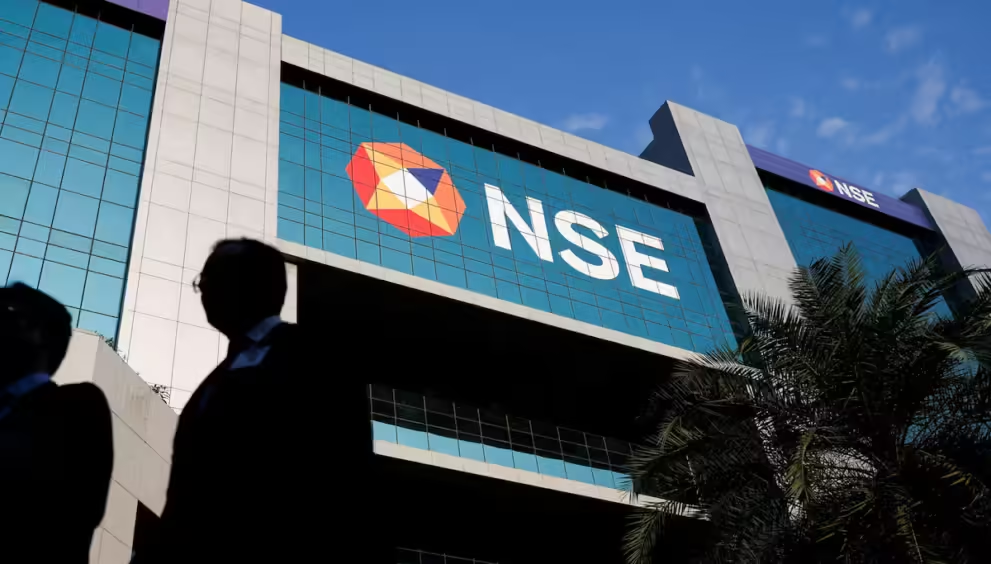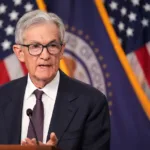Nifty 50 could see a major reshuffle in September — with BSE and IndiGo likely to replace IndusInd and Hero.
In what could be a pivotal shift in India’s equity benchmark index, NSE Indices Ltd is expected to announce a semi-annual reshuffle of the Nifty 50 in August 2025, with the changes taking effect in September. Among the top contenders for inclusion are BSE Ltd and InterGlobe Aviation (IndiGo), while IndusInd Bank and Hero MotoCorp are seen as likely candidates for exclusion.
This reshuffle is not mere housekeeping—it can have real consequences for the stocks involved, their investors, and the broader market sentiment. Here’s why this expected transition is creating waves in the market.
Understanding the Nifty 50 Reshuffle Methodology
The Nifty 50 index, managed by NSE Indices Ltd, undergoes a structured semi-annual review in March and September each year. This review is not arbitrary but is guided by a strict methodology that considers several key factors, including free-float market capitalization, six-month average daily turnover, and trading frequency. The evaluation period spans the preceding six months, and only those stocks that meet all the eligibility criteria consistently throughout this period are considered for inclusion. Moreover, for a company to qualify for the Nifty 50, it must already be a part of the Nifty 100 index and be actively traded in the Futures & Options (F&O) segment.
Probable Additions: BSE Ltd and IndiGo
Among the most probable additions to the Nifty 50 in the upcoming review are BSE Ltd and InterGlobe Aviation (IndiGo)—two standout performers that have not only delivered stellar returns but also meet all the technical inclusion criteria.
BSE Ltd., India’s oldest stock exchange, has staged a phenomenal comeback. It has been the undisputed outperformer of FY25–26 so far, with its stock price surging over 300% year-on-year. This extraordinary rally has been underpinned by a sharp rise in IPO activity, record-high retail trading volumes, and an unprecedented number of new Demat accounts being opened. Its market capitalization now exceeds ₹25,000 crore, with a free-float market cap ranking among the top in the mid-cap universe. Liquidity-wise, BSE has consistently ranked among the most traded non-Nifty stocks over the past three quarters and is also eligible for trading in the Futures & Options (F&O) segment. With strategic expansions such as its SME platform and mutual fund distribution business, BSE has built a diversified revenue base and remains one of the most attractive candidates for Nifty 50 inclusion.
InterGlobe Aviation, which operates under the brand IndiGo, is another strong contender. As India’s largest airline, IndiGo controls nearly 60% of the domestic aviation market and has recently posted a record profit of ₹8,172 crore for FY25. Its market capitalization exceeds ₹95,000 crore, and its free-float market cap and average daily turnover comfortably surpass Nifty’s minimum requirements. The stock is also F&O eligible, ticking yet another box for index eligibility. If included, IndiGo could become the first aviation stock to join the Nifty 50, signaling a growing recognition of the aviation sector’s contribution to India’s consumption-driven growth narrative.
Probable Exits: IndusInd Bank & Hero MotoCorp
On the flip side, IndusInd Bank and Hero MotoCorp are the two most likely candidates to exit the Nifty 50 in the upcoming reshuffle, owing to their underperformance in key evaluation metrics such as free-float market capitalization, liquidity, and relative stock returns.
IndusInd Bank, despite reporting stable earnings and maintaining sound asset quality, has struggled to keep up with its larger banking peers in terms of stock performance and investor sentiment. Over the past year, its stock has returned just ~7%, significantly lagging behind the ~25% gain in the Bank Nifty. Its free-float market capitalization has declined relative to competitors, and its liquidity metrics have fallen below the required thresholds in recent evaluations. The combination of tepid stock movement and diminishing trading activity has brought its Nifty 50 eligibility under scrutiny. If excluded, the bank could witness temporary selling pressure as passive index funds rebalance portfolios.
Hero MotoCorp, once the dominant force in India’s two-wheeler industry, is now grappling with shifting consumer preferences and rising competition from electric vehicle (EV) players. In contrast to peers like Bajaj Auto and TVS Motor, which have adapted swiftly to the EV transition, Hero’s slower strategic shift is beginning to weigh on investor confidence. The stock has delivered a negative return of ~-2.5% year-to-date, while volume growth remained stagnant throughout FY25. Its free-float market capitalization has also slipped below the top 50 threshold, putting its index presence at risk. A potential exclusion from the Nifty 50 would not only reflect current market dynamics but also symbolize the broader rotation in investor preferences toward tech-driven and capex-intensive sectors.
Why Do These Changes Matter?
The upcoming Nifty 50 reshuffle isn’t just a procedural formality—it carries real, market-moving consequences. Stocks that are added to the index typically attract strong buying interest from ETFs, passive funds, and institutional investors, all of which track or benchmark themselves against the Nifty 50. Inclusion leads to enhanced visibility, a sharp rise in trading volumes, and increased participation from foreign portfolio investors (FPIs) who often use the index as a filter for investment decisions.
According to industry estimates, over ₹1.5 lakh crore is passively managed through Nifty 50-linked exchange-traded funds (ETFs), mutual funds, and offshore allocations. Even a modest 0.5–1% change in index weightage can trigger ₹750–₹1,000 crore in passive inflows or outflows. Historically, stocks that are about to be included tend to rally 4–8% in the two weeks prior to their official inclusion, driven by institutional pre-positioning. Conversely, those facing exclusion often decline 3–6% as index funds adjust their holdings to align with the new composition.
What Comes Next?
While early calculations point to BSE and IndiGo replacing IndusInd Bank and Hero MotoCorp, the final decision rests with NSE Indices Ltd, based on the snapshot taken in July 2025. If confirmed, the changes will be notified in August and come into effect from the last week of September. History suggests that informed market participants begin front-running such changes well in advance.
Conclusion
The expected Nifty 50 reshuffle isn’t just a routine rejig, it reflects evolving investor sentiment, sectoral rotation, and capital market maturity. From the rise of new-age businesses like aviation and exchanges to the relative fading of legacy financials and automakers, the index’s new face may be more forward-looking than ever.
Whether you’re an active investor or a passive participant, understanding these changes can help you stay a step ahead of the curve and aligned with where institutional money is flowing next.





